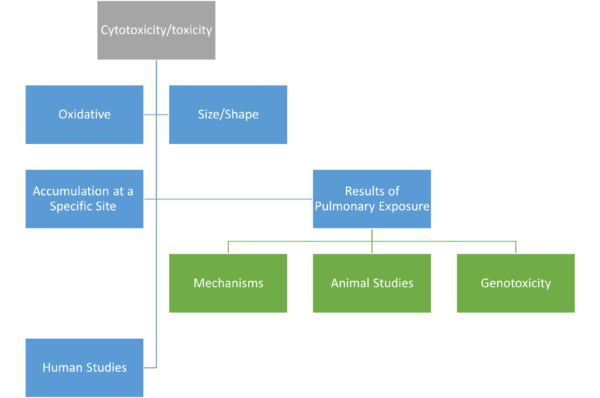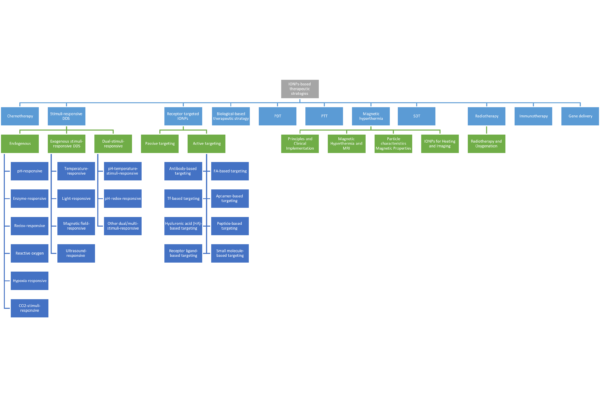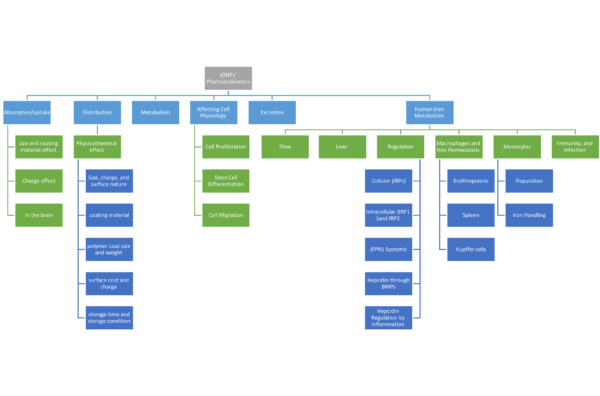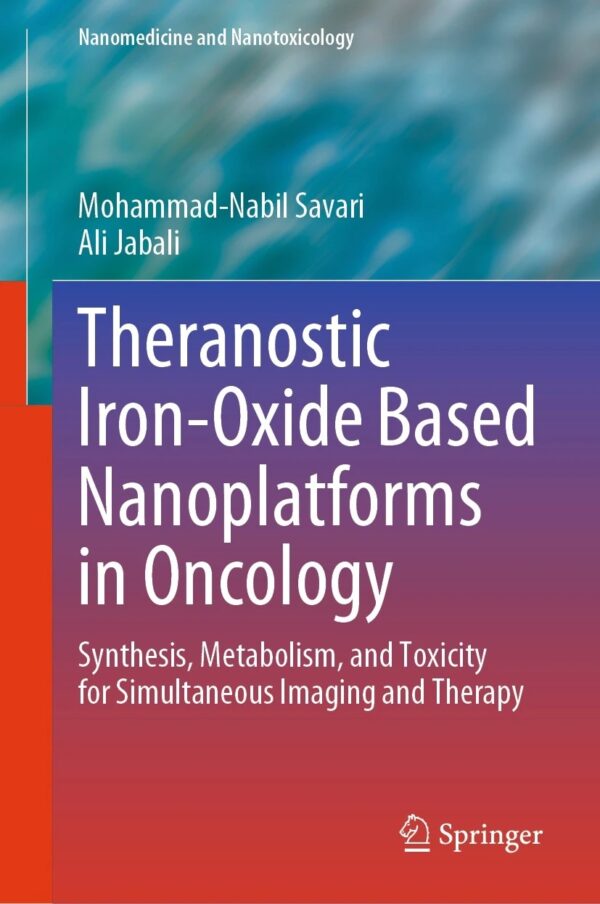توضیحات
In the field of drug delivery, controlling the release of therapeutic substances at localized targets has become a primary focus of medical research, especially in the fight against cancer. There are other chemotherapeutic drugs available for the treatment of cancer, but doxorubicin (DOX) and its related family of anthracyclines are the most popular ones. For the treatment of a range of cancers, including breast, lung, ovarian, leukemia, and lymphomas, DOX and have frequently been used in combination. These medications do, however, have some adverse effects that have an impact on the dosage and delivery to the patient. Therefore, there is a strong incentive to create a suitable chemotherapeutic cargo that can deliver medications only when necessary. To achieve higher chemotherapeutic potential, researchers have been creating various hybrids, such as IONPs with the drug conjugates (see below figure).
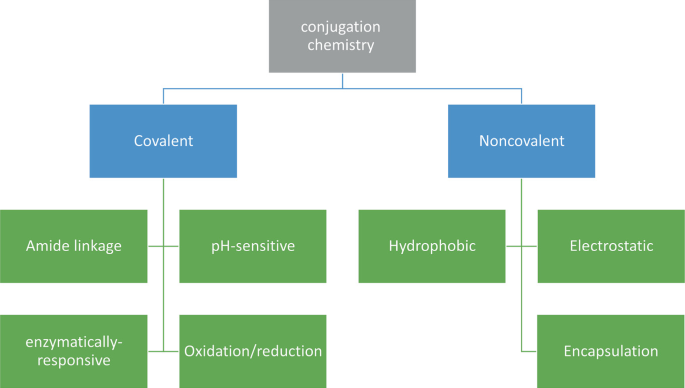
The most popular methods for conjugating drugs with metal nanoparticles (discussed in depth in this chapter)
Due to their biocompatibility and (super)paramagnetic characteristics, magnetic nanoparticles are among the most promising drug carriers. By using magnetic dipole interaction, the surface modification of the IONPs is done to stop the colloidal instability of the iron oxide. IONPs are also being used to suggest “active targeting,” in which they connect with receptors to go to their target location via systemic circulation. The goal of this research is to assess how well the IONPs’ drug-conjugated surface modifications affect their regulated delivery to the sick region of interest. With the use of either a local stimulus (such as conjugation of biomarkers, pH, etc.) or an external stimulus (such as an external magnetic field), these qualities enable the combination of imaging modalities with targeted drug release at target areas.
Due to the advantages resulting from their outstanding qualities (such as simple chemical functionalization, simple synthesis, low toxicity, biocompatibility, and high magnetic responsiveness), magnetic nanoparticle-based drug delivery systems are being developed. The literature demonstrates the effective use of magnetic nanoparticle-based drug carriers for the targeted, controlled release of medicines through a variety of stimuli. The incorporation of such devices, particularly those that allow for drug monitoring in the body, into clinical trials should result from advancements in the area.
Magnetic nanoparticles are being intensively investigated to create systems that can accurately deliver therapeutic substances to desired regions while tracking the drug’s biodistribution inside the body. The development of breakthrough methods that enable their continuous synthesis facilitates the creation of sophisticated carriers based on magnetic nanoparticles. For many different magnetic systems, active targeting methods have been devised by coating the carriers with biomarkers (antibodies, peptides, etc.) or stimuli-responsive moieties. Drug carriers with high magnetic characteristics, such as liposomes, micro/nanobots, and nanoscale clusters, can be effectively collected at desired locations when an external magnetic field is applied locally. For the treatment of other diseases including TB, malaria, or viruses, as well as for the treatment of cancer (chemotherapeutic medicines), many therapeutic chemicals have been loaded onto magnetic carriers. Combining magnetic nanoparticle therapy with other treatments like magnetic hyperthermia or radiation therapy can provide the therapeutic impact of the magnetic nanoparticles alone.
Drug Conjugation Chemistry in Iron Oxide Nanoparticles (IONPs)
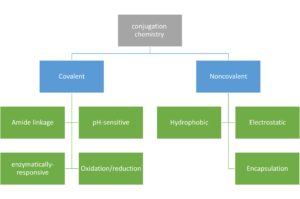
In the field of drug delivery, controlling the release of therapeutic substances at localized targets has become a primary focus of medical research, especially in the fight against cancer. There are other chemotherapeutic drugs available for the treatment of cancer, but doxorubicin (DOX) and its related family of anthracyclines are the most popular ones. For the treatment of a range of cancers, including breast, lung, ovarian, leukemia, and lymphomas, DOX and have frequently been used in combination. These medications do, however, have some adverse effects that have an impact on the dosage and delivery to the patient. Therefore, there is a strong incentive to create a suitable chemotherapeutic cargo that can deliver medications only when necessary. To achieve higher chemotherapeutic potential, researchers have been creating various hybrids, such as IONPs with the drug conjugates (see chapter’s figure).
URL: https://link.springer.com/chapter/10.1007/978-981-99-6507-6_2
نویسنده: Mohammad-Nabil Savari
5


